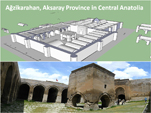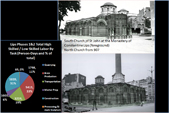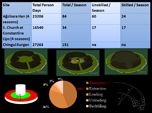Masons at Work
Jordan Pickett
University of Pennsylvania

Jordan Pickett
University of Pennsylvania
The Energetics of Construction in the Thirteenth Century: Comparing Seljuk, Byzantine, and Kipchak Building Cultures
Drawing on decades of formal architectural survey and analysis, much recent scholarship has been directed towards an understanding of the materials and techniques employed by medieval masons and trades-people to create monumental architecture. But how did the investments of contemporary medieval cultures in monumental architecture differ? That is, if medieval buildings are understood to represent the energy invested in their creation, how did different building forms draw on the material and social resources of patron- and trade-cultures, and how might building forms have shaped social structures by stimulating different sectors of specialized or unspecialized labor? The study proposed herein for presentation at the "Masons at Work" Symposium will use newly-generated digital models and labor values from a series of 13th century monuments in order to examine the position of monumental architecture in different cultures and landscapes during the same time period: the Seljuk Ağzikarahan in Central Anatolia, the Chingul Kurgan in Ukraine, and the Byzantine south church called Fenari Isa in Constantinople.


